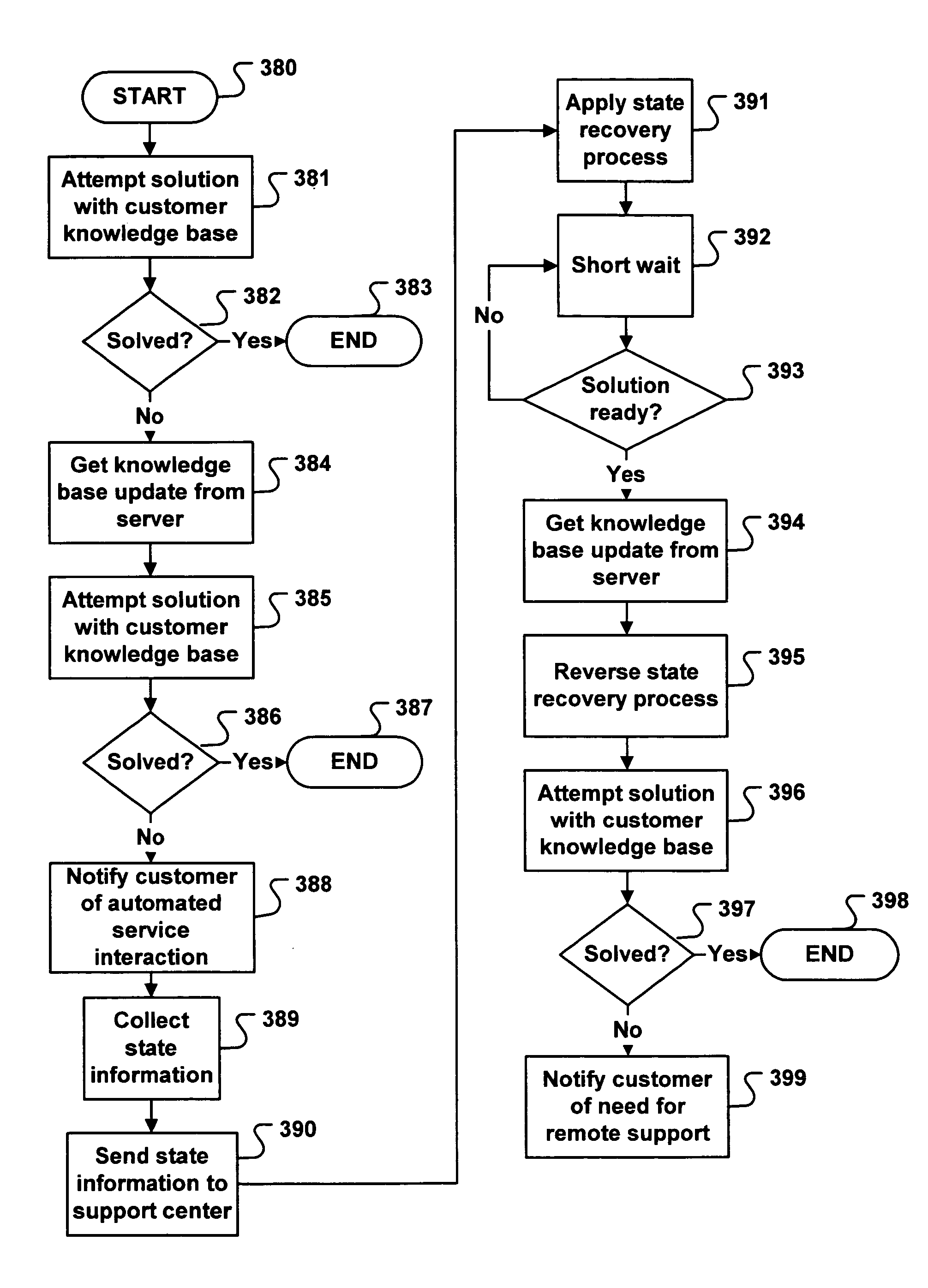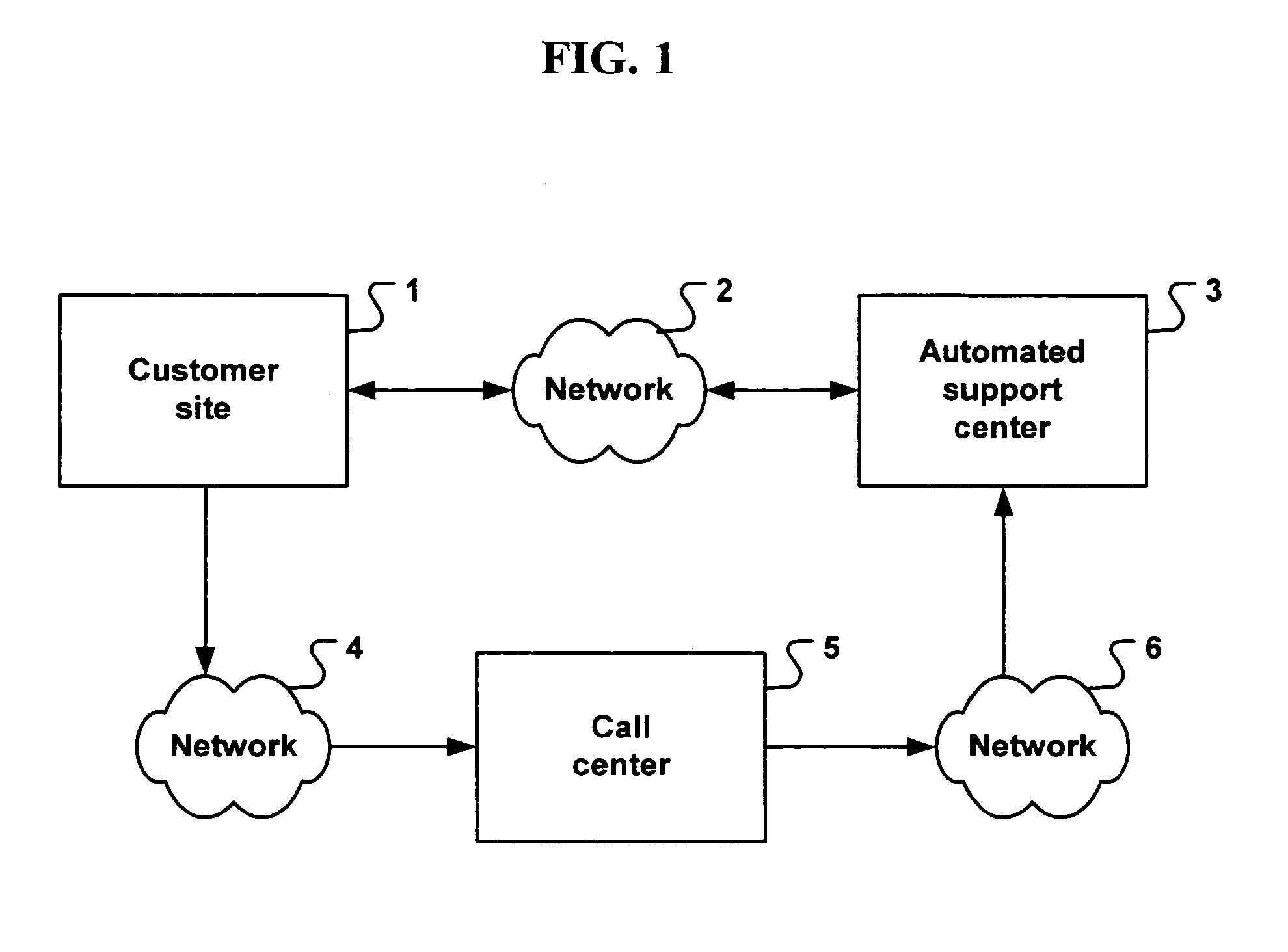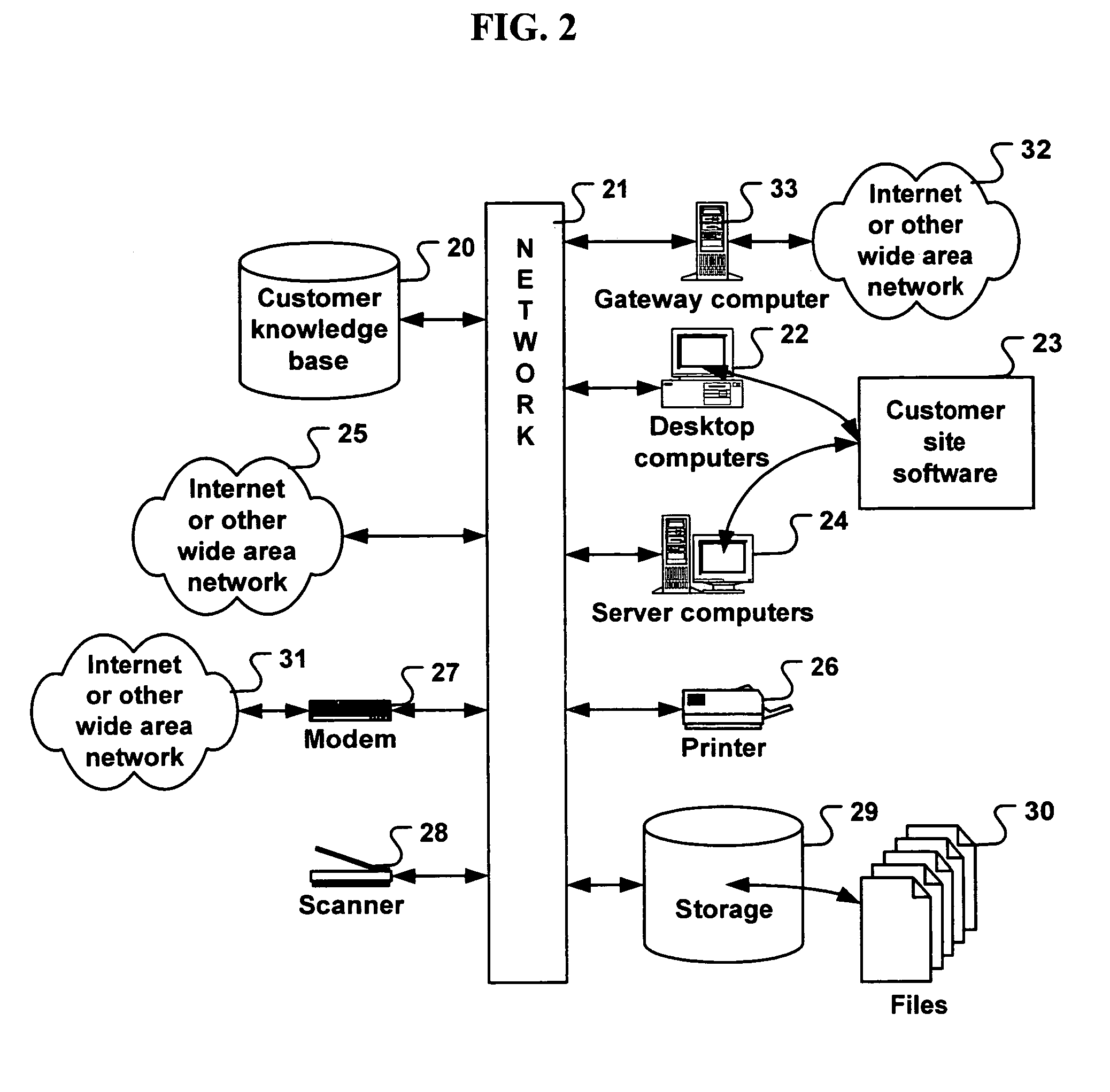System for automated problem detection, diagnosis, and resolution in a software driven system
problem detection technology, applied in the field of automated problem detection, diagnosis and resolution in a software driven system, can solve the problems of difficult or impossible to predict or prevent “emergency” problems, the single most complex component of computer software, and the most common source of failure or instability, etc., to achieve easy diagnosis, reporting and resolution, and easy to understand. , the effect of running equally easily on any machin
- Summary
- Abstract
- Description
- Claims
- Application Information
AI Technical Summary
Benefits of technology
Problems solved by technology
Method used
Image
Examples
Embodiment Construction
[0060]A description of preferred embodiments of the invention follows.
[0061]Referring to FIG. 1, a system of providing automated customer support for the computer network at customer site 1 is provided. This automated support is provided using customer site software at customer site 1 and central facility software at automated support center 3. The customer site software and central facility software communicate using network 2. The customer site software periodically initiates an update of the customer site software from the central facility software using network 2. If the automated support is unable to resolve a problem, the customer site software first attempts this update using network 2. If the problem remains unresolved, the customer site software uses network 4 to escalate the problem to call center 5, where the problem is resolved by the support staff. Once the problem is resolved at call center 5, the support staff uses network 6 to integrate the solution into the central ...
PUM
 Login to View More
Login to View More Abstract
Description
Claims
Application Information
 Login to View More
Login to View More - R&D
- Intellectual Property
- Life Sciences
- Materials
- Tech Scout
- Unparalleled Data Quality
- Higher Quality Content
- 60% Fewer Hallucinations
Browse by: Latest US Patents, China's latest patents, Technical Efficacy Thesaurus, Application Domain, Technology Topic, Popular Technical Reports.
© 2025 PatSnap. All rights reserved.Legal|Privacy policy|Modern Slavery Act Transparency Statement|Sitemap|About US| Contact US: help@patsnap.com



